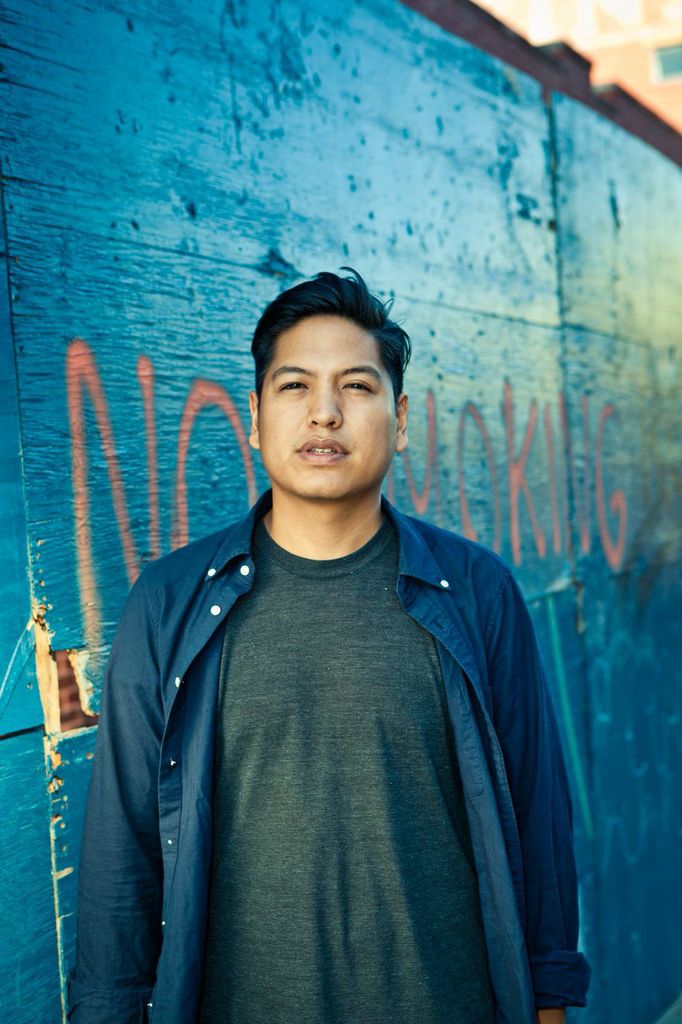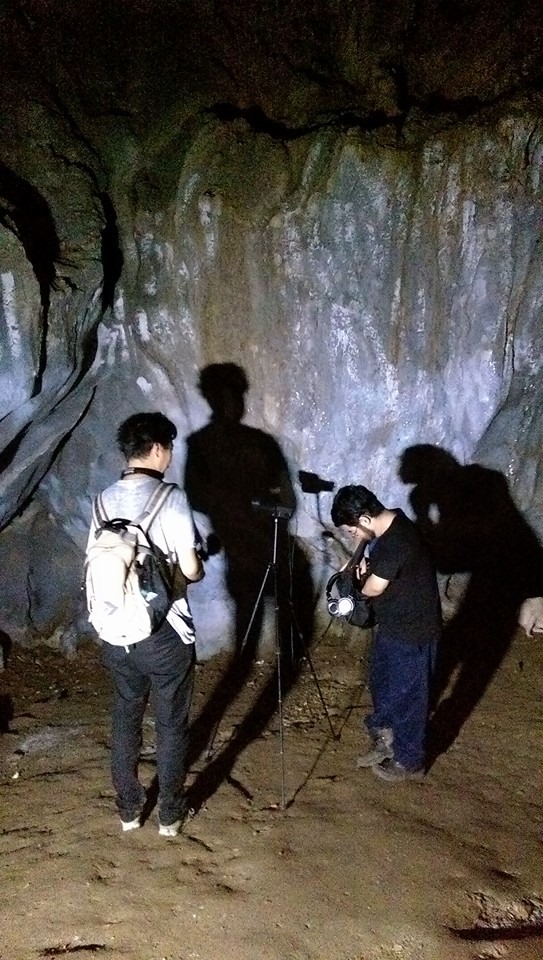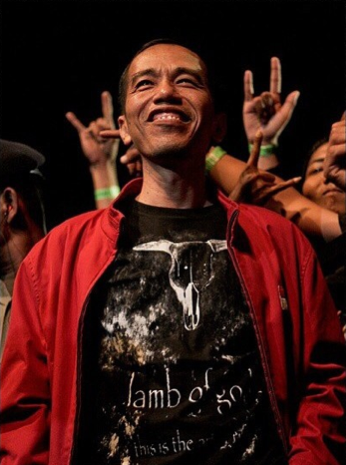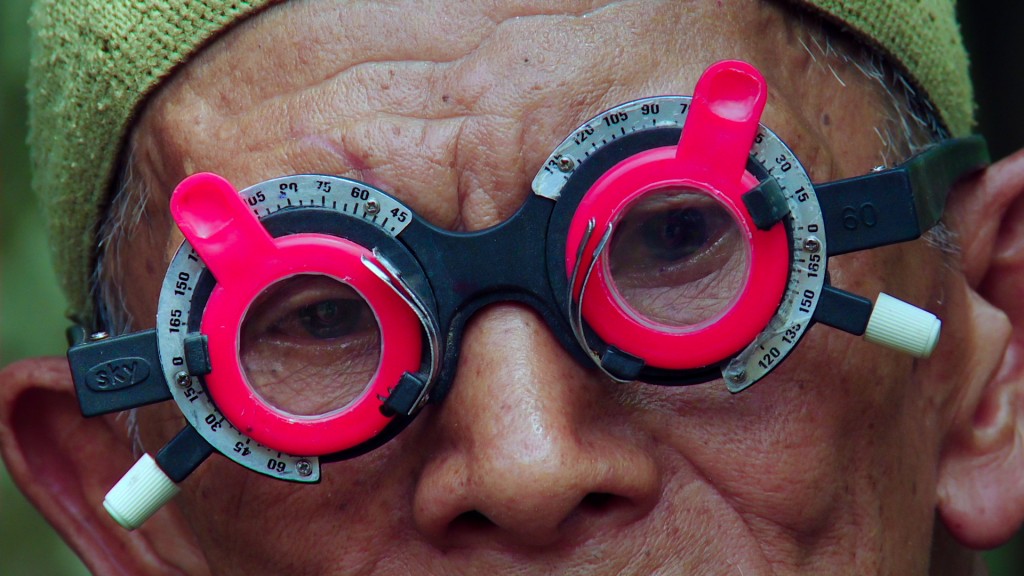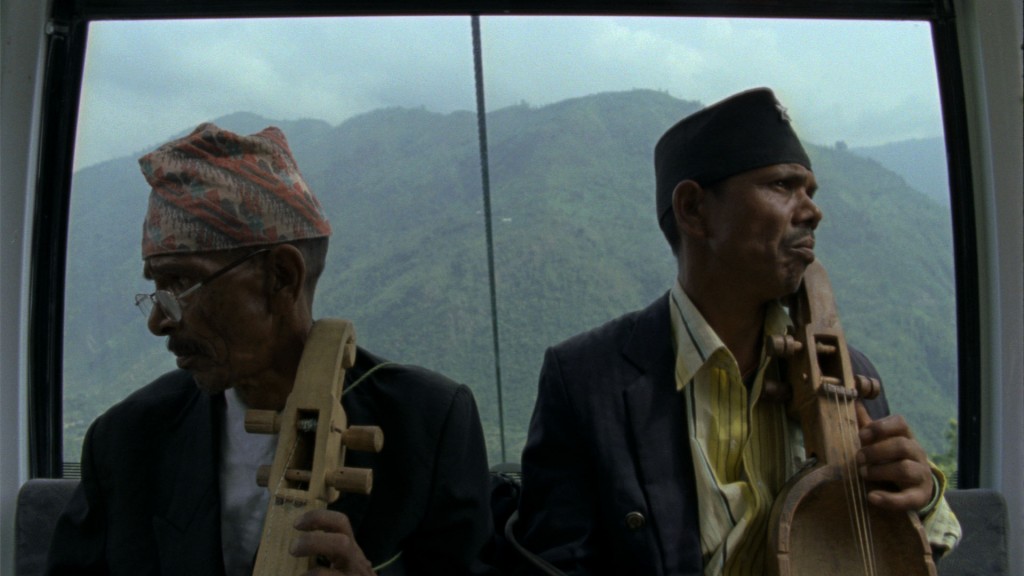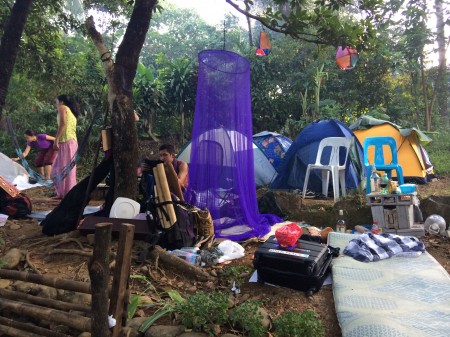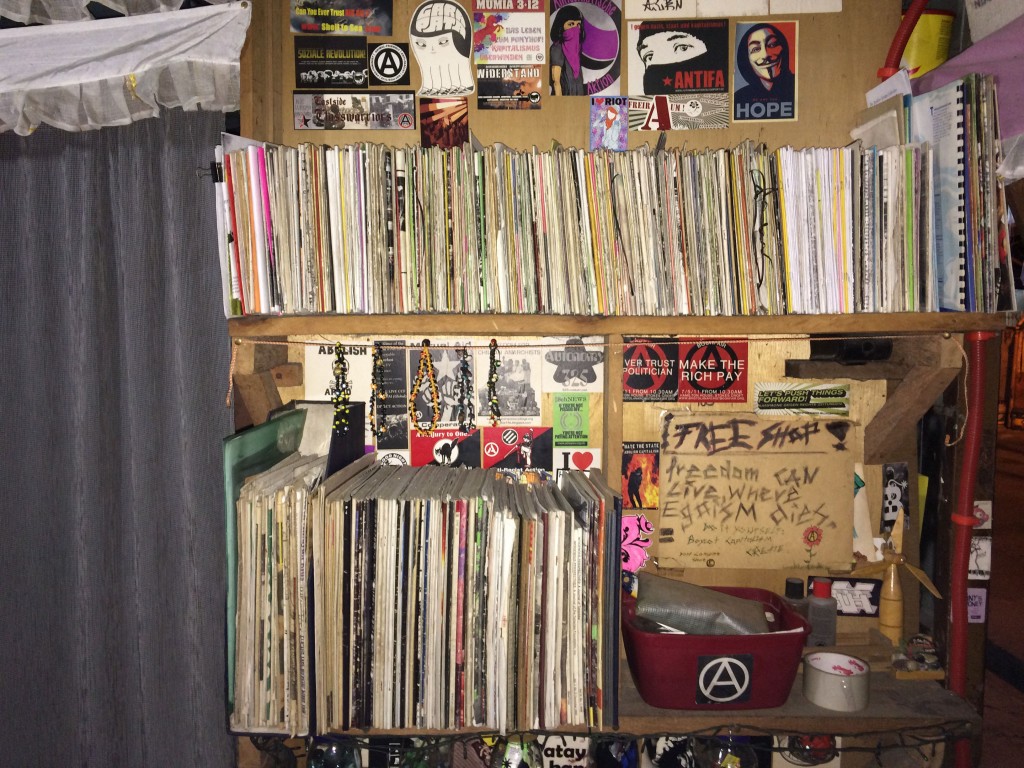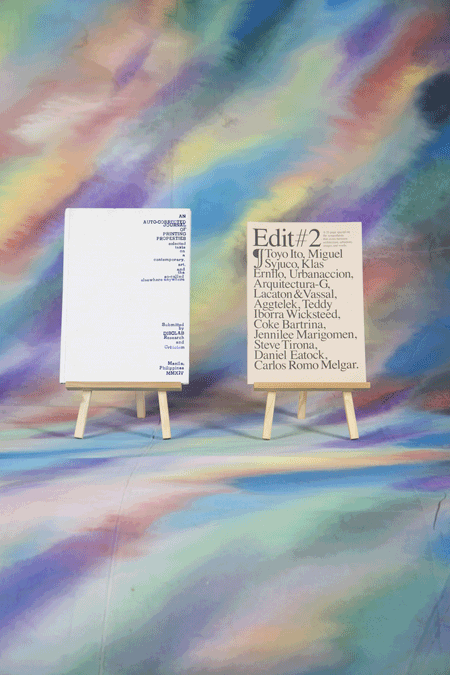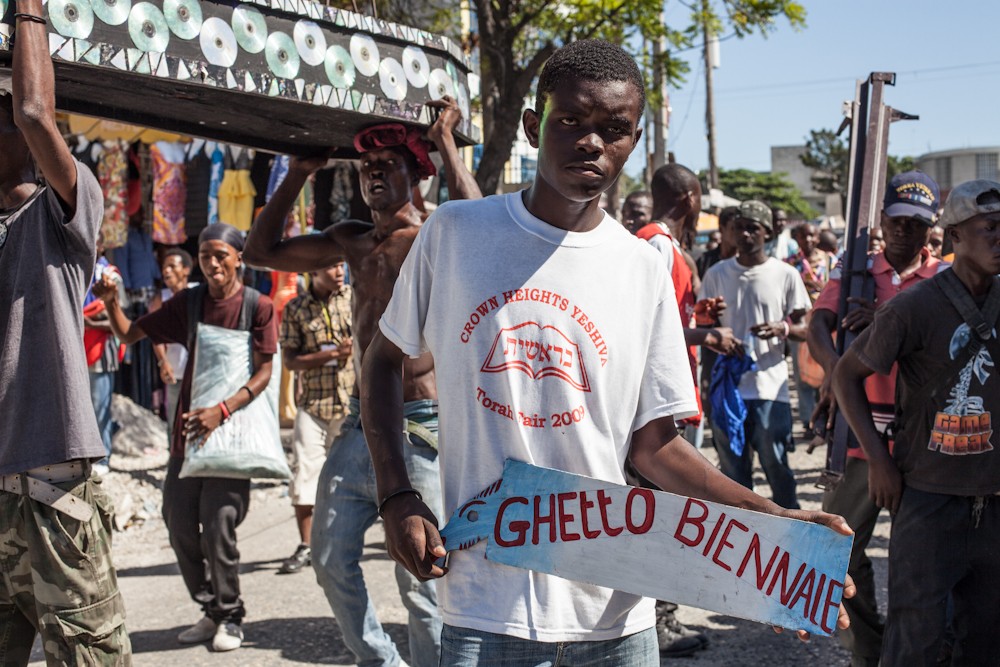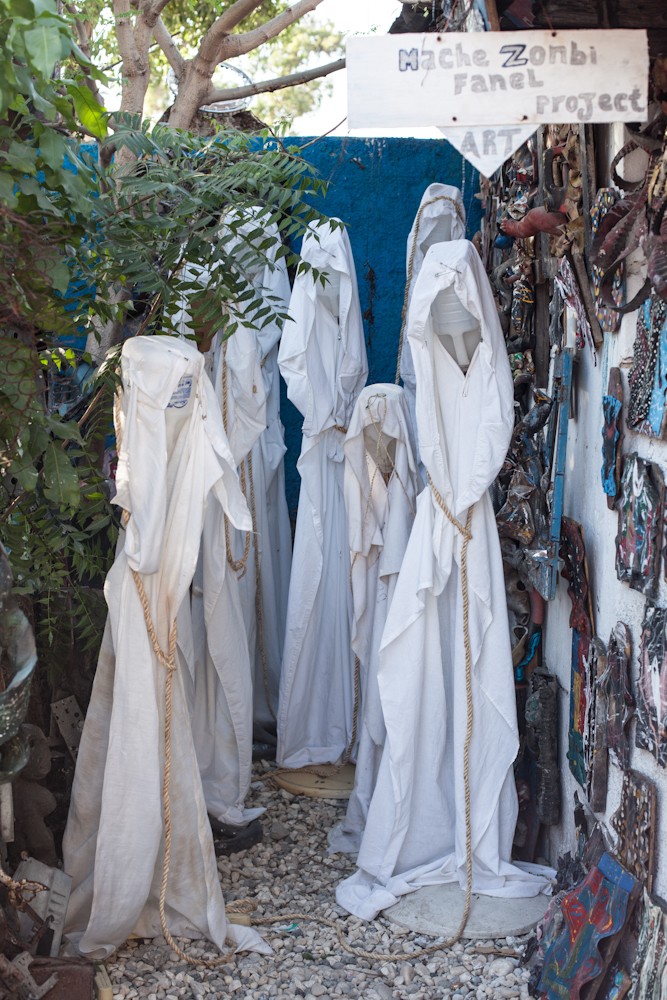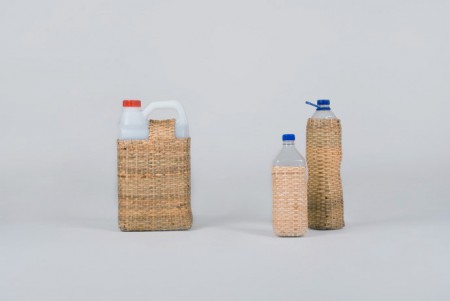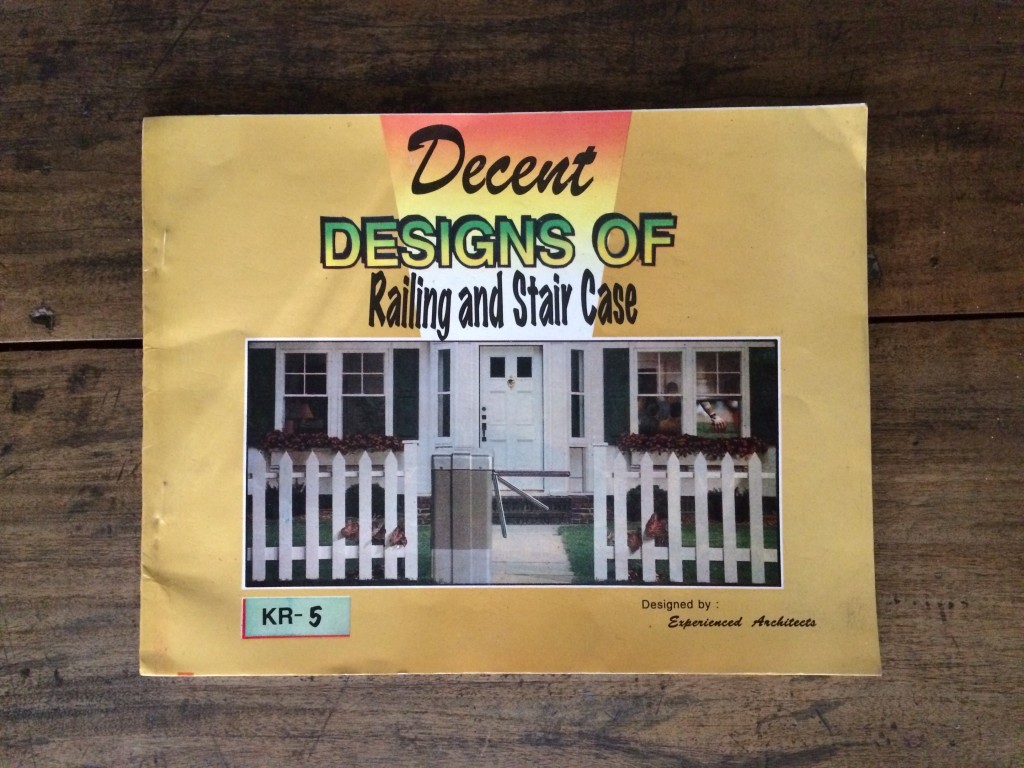To commemorate the year that was, we invited an array of artists, writers, designers, and curators—from designer Tiffany Malakooti and musician Grant Hart to artists Kalup Linzy and Alejandro Cesarco—to share a list of the most noteworthy ideas, events, and objects they encountered in 2014. See the entire series 2014: The Year According to .
The Office of Culture and Design is an autonomous platform for artists, writers, designers and social practice projects in the developing world (primarily, the Philippines). In 2013, The OCD opened a design studio and publishing arm called Hardworking Goodlooking, through which they publish the results of their experiments (and those of others) in print and other formats.
Clara Lobregat Balaguer is a writer who sometimes makes art, has learned to do graphic design, used to host shows on national television in the Philippines, and has experience in advertising. In 2010, she founded The Office of Culture and Design, an organisation through which she executes social practice projects in culturally underserved communities in the Philippines. She has released one book as author, and nine as publisher at the helm of the editorial house, Hardworking Goodlooking. She has exhibited artwork at Singapore Art Museum, Casa Asia Madrid, Galeria H2O, Ayala Museum, New York University (NYU), Hangar and La Capella. She has lectured at Massachusetts Institute of Technology (MIT), Rhode Island School of Design (RISD), Bennington College, Ateneo de Manila and University of the Philippines, Diliman. She has won prizes at the San Sebastian El Sol Festival and Premios LAUS and can say that one of her advertising productions is in the permanent collection of the Museo Centro de Arte Reina Sofia. She was the youngest directorial board member for the international design NGO, Design for the World, from 2007 to 2009. She likes plants and karaoke.
(1)
BIGGEST MIRACLE
Typhoon Hagupit (known locally as “Ruby”)
Typhoon Ruby downgraded from super typhoon to typhoon classification just before it made landfall in the Philippines on December 6, causing much less damage than expected to areas already hit by Super Typhoon Haiyan in 2013. Lots of deaths were avoided by evacuating over 2.5 million people from coastal areas, and the Philippine government actually seemed to have their act a bit more together this year. Big, big relief for the country most affected by climate change in the entire world. It was no walk in the park and the country has sustained heavy damages, but it was nowhere near the tragedy it could have been.
Hagupit aftermath
Philippines Climate Risk Index
(2)
BEST ART EVENT IN METRO MANILA
WSK 2014: Festival of the Recently Possible
We have always been fans of Manila’s sound bricolage festival, WSK, organized every year by a small team of irreductibles. Tengal, Merv Espina, Joee Mejias and Chesca Casauay did not disappoint in 2014, offering a week-long pirate radio show station packed with different programs, an applied workshop session for a curated selection of artists, field recording sessions, talks and concert-type events at three off-the-beaten-path locations. The roster included intermedia artists, conceptual musicians and research programmers from all over Asia and one dude from the United States.
Metro Manila’s art scene is dominated by a sale-centric, neo-liberal art market devotion, which can be disappointing in terms of curatorial vision. It also makes the existence of an underground festival such as WSK something akin to breeding unicorns. Their programming, every year, surprises and challenges its audience, something that doesn’t happen all the time at art events in our neck of the woods. It is no small feat for this crazy festival to have survived and transcended the underground (without selling out) over the past six years, getting better and more legit with each issue.
The festival originated as an act of rebellion against the mainstreamy music festival celebrated simultaneously all over the globe, Fête de la Musique, a promotional event of the French government. WSK used to be called Fête de la Wasaque, and it was scheduled at around the same time as Fête de la Musique, which is also held in Manila. It first emerged as an alternative arena for musicians frustrated with the non-challenging music championed by the global establishment. Over the years, the local festival has matured from mere humorous rebellion to serious experimental conviction. WSK is a contraction of the Tagalog word “wasak,” which means wasted, crazy or destroyed.
(3)
BEST POLITICAL POP CULTURE HEADLINE
Majority Muslim Indonesia elects metalhead Joko Widodo as president
Aside from being into Slayer, Widodo is not related to the military in any way and comes from the humblest of backgrounds, a revelation in itself for a country plagued by elite level, military-government corruption. He has been making headlines since his election for his reformist policies and his collection of metal band T-shirts. We super wish we had the chance to elect someone like him to run the Philippines. So far, we’ve only had oligarchs, ex-movie star political puppets, gangsters and shadies to choose from, come election time, save for a few exceptions like Walden Bello. Side note: Indonesia has a fascinating black metal scene.
(4)
MOST INTERESTING FILMS
The Look of Silence by Joshua Oppenheimer
Oppenheimer’s follow up film to the critically-acclaimed and socially impactful documentary, The Act of Killing, won the Grand Jury prize at the Venice Film Festival and the highest award at CPH:DOX film festival in Copenhagen this year. Both films effectively liquify the borders between art/creation and social agency, without considering either of the two ends more important than the other.
Critics of Oppenheimer’s approach decry the cinematic immorality of testimonial-type documentaries, claiming that it is impossible to truly respect filmed subjects when you are exploiting their stories for their emotional properties, a result ultimately controlled by the filmmaker and not the subject. Oppenheimer, however, gave his protagonists a certain level of directorial responsibility and fomented an interaction between subject and filmmaker, a sharing of filmic control that was reflected in parts of the final edit. His approach may or may not have been enough to allow the subjects to represent themselves instead of ceding control to the “other,” but what is clear (to us) is that there was a real sensitivity, on the director’s part, to portray his characters with respect, and to immerse deeply in their situational and historical context. Whichever side of the argument you may be on, the fact remains that both of these hybrid documentaries have struck a deep chord for change, both within and outside the filmmaking practice.
How to Disappear Completely by Raya Martin
This is the young Filipino director’s most acclaimed film yet since his breakout period drama, Independencia, and possibly also his most controversial. It is a highly aestheticised story of superstition, fear and violent abuse in small town Philippines. How to Disappear Completely also features a great soundtrack by Filipino musician, Eyedress.
Manakamana by Stephanie Spray and Pacho Velez
Produced at the Sensory Ethnography Laboratory of Harvard University, this documentary recounts the journey of Nepalese villagers to worship at the temple of Manakamana. It features only 11 uncut shots, but took 18 months to edit. A carefully paced, strangely fictional-feeling piece of sensory ethnography that sees the world from a moving cable car.
Storm Children, Book One, by Lav Diaz.
Through this slow-cinema chronicle of the devastation left after Typhoon Haiyan, Lav Diaz shows that he “takes his responsibility as an artist [seriously, and that] he is concerned about his people, using film as a means to convey… to a wider public the fact that even though Tacloban and its people have disappeared from the news because they’re not deemed newsworthy anymore, they are still struggling and [they] need help.” That quote is from the film review hyperlinked below, BTW.
(5)
BEST ART WORLD HEADLINE
(6)
TOP NEW FRIENDS MADE
Discussion Lab
Really glad we got to know the people at Disclab, a Philippine collective for research and criticism that does some of the most groundbreaking (local) work, to date, in terms of sensory and critical commentary on art politics. They describe themselves as online squatters, because—as almost all of the independent art-related collectives in the Philippines—they are not just chronically underfunded but wholly ignored by our government. Despite claims made since 2012 by current legislators that the cultural class is of high priority (because we make significant contributions to things such as the nation’s GDP and soft power quotient), collectives like Disclab usually have to fend for themselves. It’s inspiring to see the level of quality, professionalism and productivity that groups like them are able to hustle with little to no institutional support.
Anarchist Infoshops of the Philippines
2014 has marked a lot of collaboration with four particular anarchist collectives and infoshops in Manila: Flowergrave, Feral Crust, On Site and Etniko Bandido. Without them, many of this year’s OCD efforts would not have been possible. To cap off the deepening relationships with these collectives, we got to attend the Philippine Infoshops and Autonomous Spaces Conference, a nation-wide meetup held late this year. We camped out for two nights in a small backyard, somewhere on the provincial outskirts of Metro Manila. The program was super intense, with loads of presentations on what tiny, anti-system collectives are doing to help their communities all over the country. Was quite a lesson in sticking to your grassroots guns and making every little peso stretch as far as it can towards the common good. We also drank a lot of Tanduay rum.
An infoshop is a community activity space that begins with a library. The books contained in each infoshop’s library are usually titles that reflect anarchist, anti-system and alternative philosophies. They are open to read, borrow and photocopy. In order to disseminate the ideas contained in these libraries, as well as each infoshop’s particular activist agenda, direct action activities are organized. These may include food drives (Food Not Bombs), everything-for-free markets, workshops, skill enhancing sessions, conferences, exhibitions, concerts, rallies or any other form of radical protest.
(7)
BIGGEST ACHIEVEMENT
Finishing 7 Hardworking Goodlooking books in 2014, just in time for the New York Art Book Fair
Seven books in one year on the tightest of budgets and the deadliest of deadlines is a personal best for us. We still can’t quite believe we did it. But we totally did. Here’s the GIF that proves it. (Back patting ensues.)
(8)
MOST INFURIATING PIECE OF AUTO-RACIST ADVERTISING
Kutis Mayaman campaign by skin-whitening brand, Glutamax
This questionable piece of marketing logic makes our top 10 because it’s heinous, and also because it’s lighting in us a longstanding fire to do something to counteract the culture of shadism (and its relation to classist elitism) that is rampant in the Philippines. For those who don’t speak Tagalog, the slogan “Kutis Mayaman” translates to “Rich People Skin.” Previous billboards from this same brand, all put up on highly trafficked thoroughfares, boasted equally ridiculous slogans and concepts.
The blog post we link to below, probably sponsored in some way by the skin whitening brand, speaks volumes of how this sort of marketing reflects the darkest side of Filipino self-image issues. Pun intended. The first line of the post is revealing: “Who wouldn’t want to have skin like it belongs to a rich person? I know I do!”
(9)
MOST “PEG NA PEG” DISCOVERIES MADE ON THE INTERWEBS AND IRL
In Tagalog-English slang, “peg na peg” means that you admire something or someone as a role model. It is an expression born of advertising jargon. At meetings, when clients ask you to send visual references for campaigns, they ask for your pegs. This refers both to the JPG file format in which references are usually sent, and the fact that you are pegging a campaign against these references.
Ghetto Biennale
Early this year, we discovered through our friend Robert Peterson’s Facebook wall that something amazing called the Ghetto Biennale exists and has been running since 2009 in Haiti. It is a gloriously complex, moving, contradictory and hardcore stand for the cause of social practice in the cultural (developing) world. Here’s a great quote from their website, which we relate to wholeheartedly:
“While the Ghetto Biennale was conceived to expose social, racial, class and geographical immobility, it seemed to have upheld these class inertias within its structural core. The Ghetto Biennale is looking for balance amongst the multifarious and often contradictory agendas underpinning the event. Are we institutional critique or a season ticket to the institution? Are we poverty tourism or an exit strategy from the ghetto? What was the effect of the earthquake and the ensuing NGO culture on cross-cultural relations in Haiti? The straplines for the previous Ghetto Biennales were ‘What happens when first world art rubs up against third world art? Does it bleed?’…Did the Ghetto Biennale bleed, and if so where?”
Field Experiments
Kristian Henson, our head of design, came across this company at The Site Unseen design fair in NYC. They describe themselves as a “nomadic design collective exploring traditional crafts,” traveling around the world to create products, printed matter, films, installations and other stuff, inspired by vernacular forms of artisanry. So up our alley, it’s not even funny. And they also have a neat website.
(10)
MOST PROVOCATIVE FOUND BOOK TITLE OF THE YEAR, FROM THE BOTTOM SHELF COLLECTION
Decent Designs of Railing and Stair Case by Experienced Architects
So, this one was tough. We find a lot of really crazy titles in Filipino bookstores, mostly on the forgotten bottom shelves. So many great additions to our collection this year: Being a Social Being, The Cyrupaedia of Body Building (written by a guy named Cyrus), Kosher Yoga, Herpestes: The Electrifying Filipino Martial Arts… but we finally decided upon a title so honest, so real that it could only have been written by someone extremely secure in their own self-worth, someone with experience. Also, the photograph on the cover of Decent Designs… is hyperconceptual. The turnstile in front of the path leading to a residential house, the cryptic picture of the hand holding an American football in the window… so many things post-postcolonially ponder.
Other titles in the series include Modern Designs…, Attractive Designs…, Simple Designs…, and Latest Designs… They are all printed in India at a press called Printer’s Cottage, and the cover was designed by a certain Graphic Boss. Yes, a thousand times yes to all cottage industry printed matter from the developing world.


